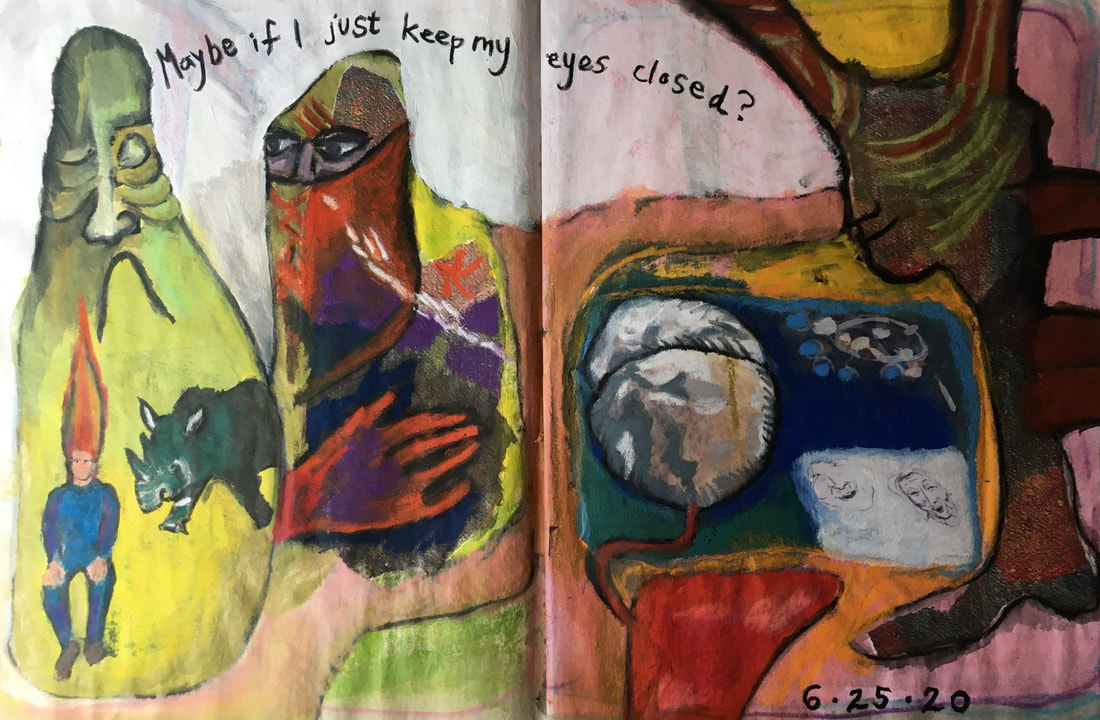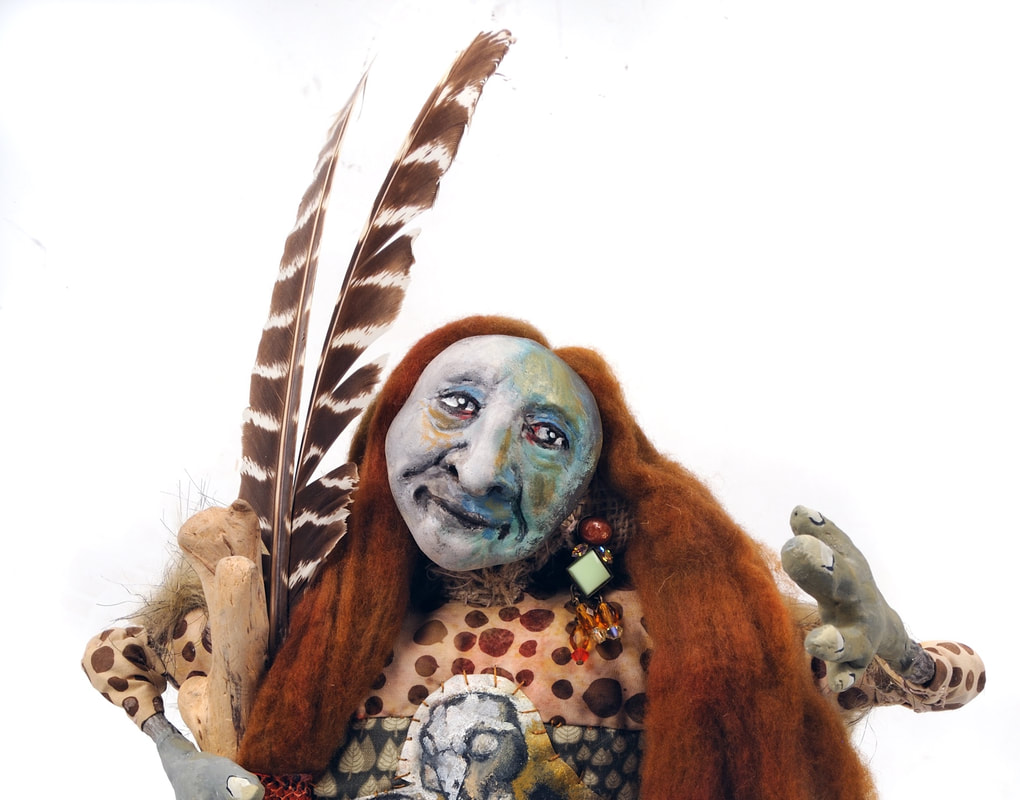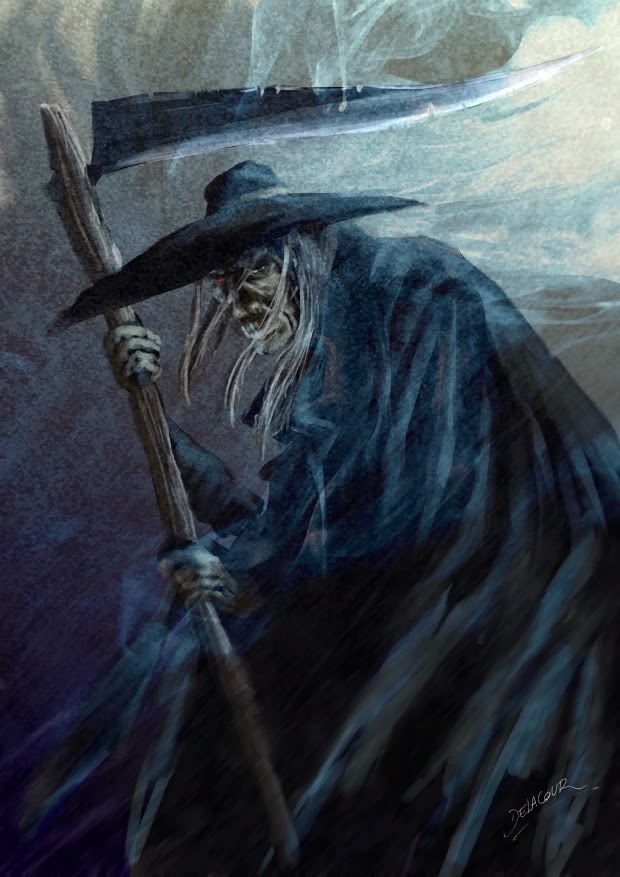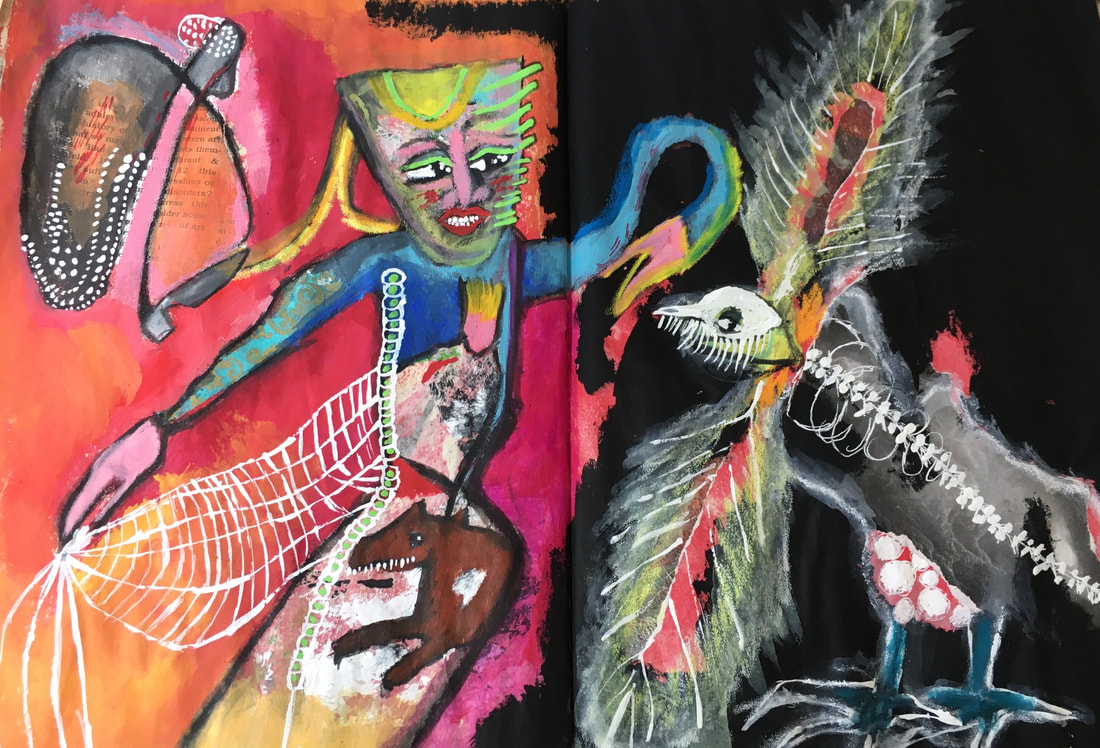|
Living a Life Attuned.... In preparing for an upcoming course, entitled Maiden, Mother Crone, Death, I added the word death, because it seemed important, even though a part of me was strongly resisting adding this word. In this post, I want to share some of my thoughts about how death fits in with the cycles of a woman's life from maiden to mother to crone. Several years ago, a close friend of mine who is more comfortable with thoughts of death than most people I know, (she meditates often on her own death in a yoga "corpse meditation") recommended an app called “We Croak.” This app reminds us that we are going to die someday, with five times a day messages that are less about death and more about the preciousness of life. Since then, I have come to appreciate these reminders throughout my day. For instance, I just got this message on the app: Even when the plum has wilted and the winter has reached its deepest cold, do not let your body be numb or your mind absent. Dōgen Zenji. This post is meant to be an introduction to a way of viewing death, rooted in the worldview of our deep ancestors. If this (within the context of the feminine divine) interests you, I share a list of books for further exploration below. What if we see death the way our paleolitihic ancestors viewed it, as a welcome stage in a life lived in relationship to a greater whole? In this way, rather than cut off from each other, from the divine and from nature, we are profoundly connected to the web of life. A couple of caveats: One: if death itself feels too scary to think about, consider the many smaller "deaths" that we experience throughout our lives as we let go of experiences, abilities, loved ones, as part of the inevitable changes of life. Two: you don't have to be a mother to experience the "mother" part of the maiden, mother crone cycles of life. We are all mothers to ourselves, to our friends and even sometimes to those we happen to meet in the course of our days. Our Culture’s Negative View of Death as the “Grim Reaper” When you think about death, do those scary archetypes in our culture come to mind? If you ever watched a horror movie, or even if you have paid any attention to popular culture, you would have come across the archetype of death as the “Grim Reaper.” There is an older, Celtic, version of this scary character, occurring also in other cultures, a horrifying-looking monster with a black cape and carrying a scythe, and called “Ankou.” “Ankou,” the lord of death, ferries people who have died to their life beyond. He sometimes pushes a cart and his eyes are holes filled with fire. He is terrifying and yet he serves primarily as a guide and messenger, not someone who is here to punish you for your sins in life. A general word for someone who guides you into the land of death is a psychopomp. What is a psychopomp? The definition of psychopomp in Wikipedia is, “creatures, spirits, angels or deities in many religions, whose responsibility is to guide newly deceased souls to the afterlife. Their role is not to judge the deceased, but to guide them.” This definition goes on to describe a list of male deities from various cultures and religions whose roles may be seen as psychopomps. These include: Egyptian Anubis, Hindu Yama, Greek ferryman Charon, and the god Hermes, Roman God, Mercury. In Christianity, Saint Peter, Archangel Michael and Jesus can be seen as psychopomps. In addition to these better known male psychopomps, I would also like to consider some female psychopomps, some of whom are better known in their other roles.  Maybe if I just kept my eyes closed? Collage, goauche and watercolor pencils in handmade book Maybe if I just kept my eyes closed? Collage, goauche and watercolor pencils in handmade book The need for psychopomps only occurred when death became scary and separate... In a wonderful book, The Myth of the Goddess: Evolution of an Image, the authors make the point that in a time when our ancestors worshipped a nurturing Mother Goddess (tracing back to the paleolithic era,) they didn't have the fear of death that we experience now. This was a time, 20,000 years ago and more, when "human beings experienced themselves as the children of Nature, in relationship with all things, part of the whole." Living deep in caves that represented the womb of this mother goddess, "with death, they would have felt that they were taken back into the dark womb of the Mother and believed they would be reborn like the moon." (p 19 The Myth of the Goddess.) This view persisted through the following Neolithic era (10,000 to 5500 BC) and it wasn't until the Bronze age (3500 to 1250 BC) that the worlds of life and death became so separate that it was believed that a guide was necessary to transition from one world to the other. Not surprisingly this transition also occurred at the same time as the introduction of weapons of war, with the invasion of "migratory warrior tribesmen who imposed their mythology and patriarchal customs on the agricultural peoples whose territory they invaded..we are in the presence of the Indo-European (Ayran) and semitic inheritance. (p 155, The Myth of the Goddess.) As our existence became more and more separated from nature, from the divine and from a sense of connectedness with each other, death also became more scary. And in more recent history, even the psychopomps themselves became scary and threatening. Divine feminine Psychopomps What if the psychopomp, instead of being a terrifying dark monster holding a scythe, were someone who holds our hand? What if she were a loving guide? In Greek mythology there is Hecate, who I discussed in another blog post and who is known for guiding women at crucial life crossroads, and certainly death is one of these. In Greek and Roman mythology, Hecate guides Demeter, the mother goddess, also in charge of agriculture and growth, to find her daughter, Persephone, in the underworld. This is one of many stories of goddesses searching the underworld for lost loved ones. This story has many layers of meaning, but on one level it was seen as a metaphor for the change of seasons. During the times that Persephone is above ground, Demeter allows the sun to shine and crops to grow, and when Persephone is below ground, winter comes and growth stops. There is still a sense of connectedness to nature and to cycles of life. Mary, known in the Catholic faith among many other names, as "mother of God", can be seen as a psychopomp in her guise as the Queen of the Underworld. In this role, she is also deeply connected to the earth, to the soil, to the cycles of life. In this way, she fits into a framework of the psychopomp as a guide and companion to the underworld, that is part of a cycle of death and rebirth. Rather than a punishing and terrifying monster, such as the Grim Reaper, she holds us in her arms. Journey into Death as a Metaphor for Spiritual Integration Jumping back into time, another version of a psychopomp is the Sumerian goddess, Inanna, who in the poem The Descent of Inanna, makes her way into the realm of her sister, Ereshkigal. An interesting dimension to her story is that she has to shed a layer at each stage of the journey to the underworld. The layers that she removes include, her crown, earrings, breast decorations, girdle, and skirt. These outer adornments each correspond to a chakra in the body, from the crown chakra, on down to the sacral chakra. In this way, her journey can be interpreted as a metaphor for a deepening of spiritual integration. As Inanna descends to meet her sister, who in this story serves as Queen of the Dead, she sheds layers of her outward identity and reveals her innermost soul. In some ways, Inanna and Ereshkigal can be seen as two sides of one identity, light and dark, upper and lower, goddess of the upper world and goddess of the lower world. Delving into Our Inner Dimensions
In the realm of psychology, Jung describes the psychopomp as the mediator between conscious and unconscious. The connection here is with death as a metaphor for the formlessness of the inner life of dreams and the imagination. Just as we need a guide to assist us in our final journey, we also need a guide to assist us in navigating the threshold between our imagination and our waking lives. In living fully, we are healthiest when we have a balance of the two. Jung saw our psyche as divided into a consciousness above the line and the unconscious below. Within the unconscious live all kinds of collective archetypes, symbolic representations of various spiritual and emotional aspects of who we are collectively as human beings. His definition of healthy aging had to do with an integration, a coming together of all those disparate parts. And in order to do that, we need a guide to help us navigate between these worlds. We can find this inner guide in dreams, in the creative process (writing, art, poetry) and in living creatively and fully. How does this matter in our daily lives? Questions that come up when we reflect on these ideas are many. How do we mediate our own unconscious worlds, our own psyches? What happens when we embrace the feminine archetypes for psychopomps, rather than the often ferocious or warlike male figures? I've been hearing more often lately about people who are living a "normal" life but who suddenly experience a spiritual awakening. What's this about? Does this say something about a sea change in the way people are navigating their lives? It feels like the veil that used to separate our "average" day-to-day life from what's bubbling underneath is getting thinner. Things are changing fast and in a way that isn't a moment too soon. Our crazy world needs us to be connected to all of what is available to us, to our inner lives, to our spiritual lives, to nature and to our ancestors, in order to meet the challenges that are facing us today. It behooves us to tune into and welcome a more integrated view of the full spectrum of human existence, one which integrates the whole spectrum of life and death and rebirth, rather than fearing death as a representation of the dark/unknown. No matter where you are in terms of your beliefs about these things, I hope that this article piqued your imagination for further exploration. Books to read: Here are a few books to explore some of these ideas further… The Heroine with 1,001 Faces, Maria Tatar Longing for Darkness: Tara and the Black Madonna, China Galland The Crone: Woman of Age, Wisdom and Power by Barbara G. Walker Cassandra Speaks: When Women are the Storytellers the Human Story Changes by Elizabeth Lesser The Myth of the Goddess: Evolution of an Image by Ann Baring and Jules Cashford And I’m really looking forward to this one coming out soon: Hagitude: Reimagining the Second Half of Life, Sharon Blackie
0 Comments
Leave a Reply. |
ErikaI've been making dolls for about ten years now. I believe that dolls serve as representations and reminders of the best part of ourselves. I am excited to share with you here my learnings about new methods and techniques for doll making and healing. So glad you are here! Categories |
Proudly powered by Weebly



 RSS Feed
RSS Feed